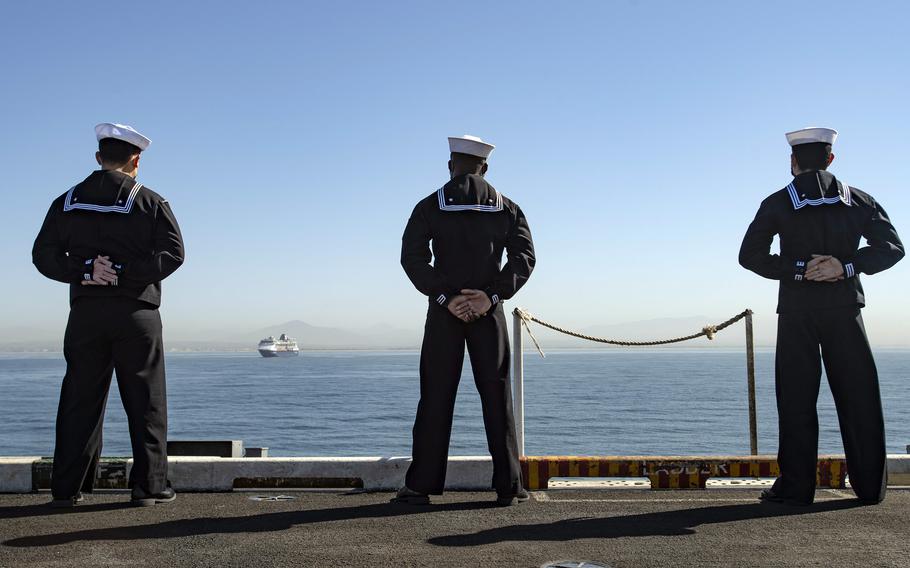
Sailors man the rails of the aircraft carrier USS Nimitz in San Diego in February 2021. (Jose Madrigal/U.S. Navy)
The overall well-being of U.S. sailors has continued to slowly improve, but levels of severe and extreme stress plague a third of the force, according to an annual Navy survey released Thursday.
Sailors reporting severe or extreme levels of stress have steadily increased since the annual reports began five years ago, according to the 2023 Health of the Force Survey.
In 2019, 26% of those surveyed reported experiencing severe to extreme stress. In 2023, that level rose to 37%.
Survey participants with the grade of petty officer first class or below were the most likely to report severe or extreme stress levels, the survey found.
“Since 2019, inadequate manning has topped the list of reasons for heightened stress levels,” the survey states.
Quality-of-life issues for service members are of growing concern for all the services, particularly as recruiting and retention have become more difficult in recent years.
These “challenges exacerbate Fleet manning shortages, putting additional stress on our force, which could have negative effects on readiness and potentially impact future retention, in an environment where retention is ever important,” the survey states.
In the wake of separate collisions in 2017 of two guided-missile destroyers, USS John S. McCain and USS Fitzgerald, the Navy undertook a comprehensive review of the fleet.
Among its conclusions were that its ships deployed overseas were inadequately maintained, and the crews overworked, undermanned and short on training.
“During these contentious times, it is imperative that we not only build, maintain, train, and equip combat-ready, lethal Naval forces, but we must maintain the strong foundation of our most critical strength, our highly trained and skilled Sailors,” the survey states.
The 2023 survey had 19,380 participants who completed at least a third of the survey. The level of participation translates into a margin of error of plus-or-minus 5%.
Among the metrics, or “protective factors,” the survey uses to assess overall status of the force are how connected sailors feel in the context of a larger group; equality of opportunity; organizational commitment to the service’s goals and values; and trust in the integrity of the chain of command.
“In comparison to previous results, 2023 indicates that the protective factors have stabilized and rebounded slightly as observed by increases in the percentage of participants with moderate levels of each factor and decreases in the percentage with low levels,” the survey states.
Most significantly improved was organization commitment, where the percentage of personnel with moderate to high levels increased to 71% from 61% the previous year.
Twenty-three percent of participants said their plans for exiting the Navy were certain, three times the percentage expressing that in the 2022 survey.
Roughly a fifth of those surveyed were “on the fence” about staying in the Navy, the survey states.
“[T]he most commonly cited influences to leave include civilian career opportunities, salary, difficulty balancing work and their personal life, a desire to focus on the family, and the climate at their current command,” the survey states.
And what factors might influence them to stay in?
The most mentioned factors were job security, availability of billets in desirable locations, salary, retirement benefits and the ability to balance work with personal life.